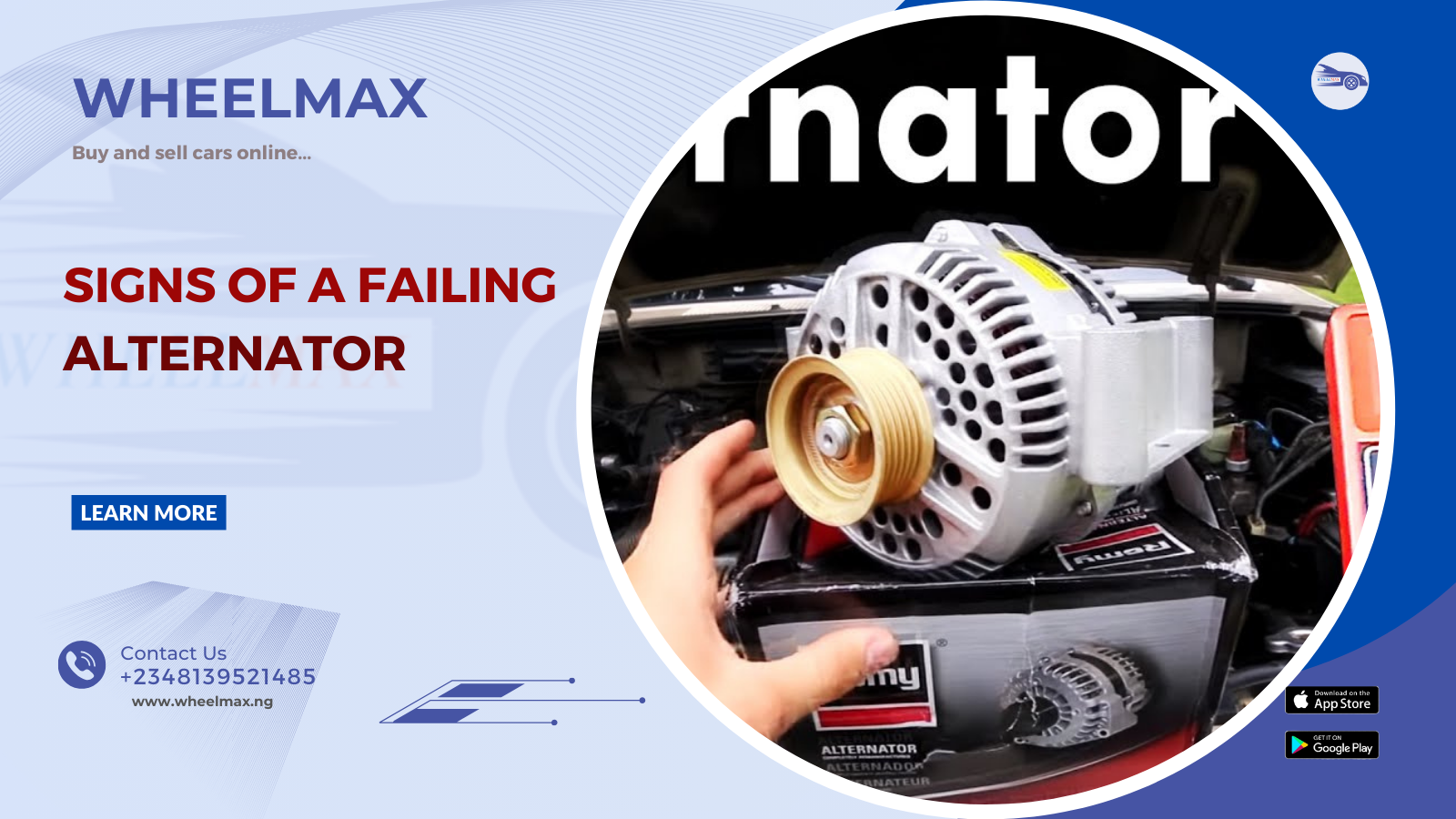Is Your Car's Alternator failing? Here's How to Diagnose the Problem
The alternator, a vital but often overlooked component, is the unsung hero of your car's electrical system. It constantly converts mechanical energy from the engine into electricity to recharge the battery and power all your car's electrical gizmos.
A failing alternator can leave you stranded on the side of the road, so it's crucial to identify the warning signs. But before you rush to the mechanic, this blog post will equip you with the knowledge to diagnose potential alternator trouble and some simple DIY tests you can try (with safety precautions in mind!).
Spotting the Signs of a Failing Alternator
A failing alternator can manifest in several ways, some more subtle than others. Here are the key symptoms to watch out for:
- Dim or Flickering Lights: This is a telltale sign of insufficient power generation. Headlights, taillights, and even dashboard lights might appear dim or flicker erratically.
- Electrical Gremlins: If your windows seem sluggish, the radio sputters, or the gauges act funky, it could be due to a failing alternator struggling to keep up with the electrical demands.
- Battery Blues: A weak battery that struggles to hold a charge or requires frequent jump starts might point to an alternator not replenishing the battery's power adequately.
- Illuminated Battery Warning Light: Modern cars often have a dashboard light that illuminates when the alternator isn't functioning properly. Don't ignore this warning! When the battery warning light comes on, it is usually an indication of a serious problem.
- Whining or Grinding Noises: In some cases, a failing alternator bearing might emit a whining or grinding noise from under the hood.
- Burning Smell: A severe issue – a burning rubber or electrical wire scent might indicate a failing alternator overheating and causing damage. If you experience this, pull over immediately and call for assistance.
Diagnosing the Alternator: DIY Tests (with Caution!)
Important Note: Before attempting any DIY tests, ensure you're comfortable working around your car and prioritize safety. If you're unsure about any step, consult a qualified mechanic.
- Voltage Test: Using a multimeter, measure the voltage at the battery terminals with the engine off (ideally above 12.4 volts) and again while the engine runs at moderate RPM (around 13.5 to 14.5 volts). A significantly lower or higher voltage reading than these ranges could indicate alternator trouble.
- Jump Start Test: If your car struggles to start but jump starts readily and stays running with the jumper cables disconnected, it might suggest a failing alternator not recharging the battery. (Caution: This isn't a definitive test, and prolonged reliance on jump starts can damage your car's electrical system).
Remember: These DIY tests provide a preliminary check. A conclusive diagnosis often requires more specialized tools and expertise. Consulting a trusted mechanic for a thorough inspection and potential replacement is the safest course of action.
Taking Care of Business: Replacing the Alternator
If your alternator does need replacing, don't fret. Replacing an alternator isn't the most complex repair, but it can be time-consuming and requires some mechanical knowledge. Depending on your car model and comfort level, you can attempt the replacement yourself using a repair manual or consider getting it done by a professional mechanic.
Keeping Your Alternator Healthy
While alternator failure is inevitable over time, there are ways to prolong its lifespan:
- Regular Maintenance: Schedule routine maintenance checks to ensure proper belt tension and overall alternator health.
- Avoid Excessive Electrical Load: Limit the use of power-hungry accessories, especially when the engine is idling, as this puts extra strain on the alternator.
- Extreme Temperatures: Keep your car cool in hot weather, as extreme heat can negatively impact the alternator's performance.
By recognizing the signs of a failing alternator, performing basic checks, and following preventive measures, you can ensure your car's electrical system keeps humming along, preventing unexpected breakdowns and keeping you safely on the road.
